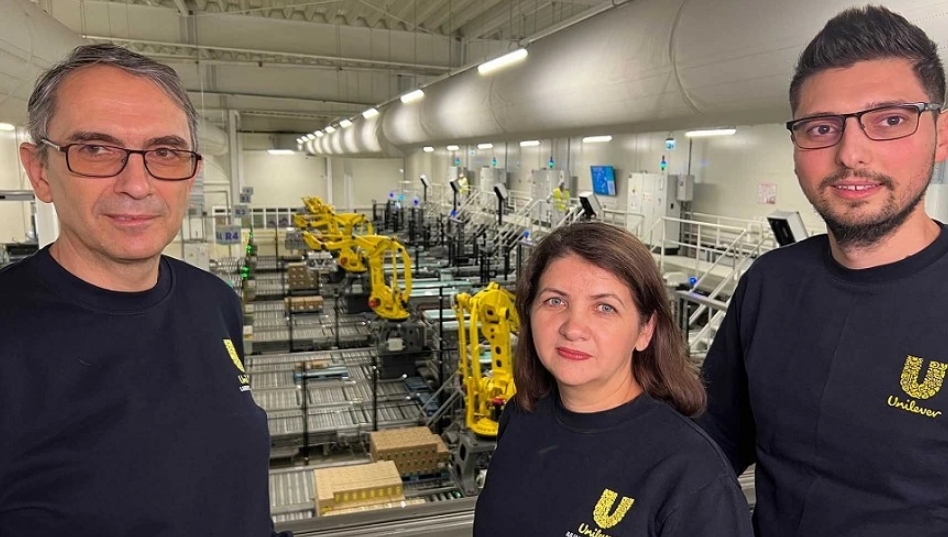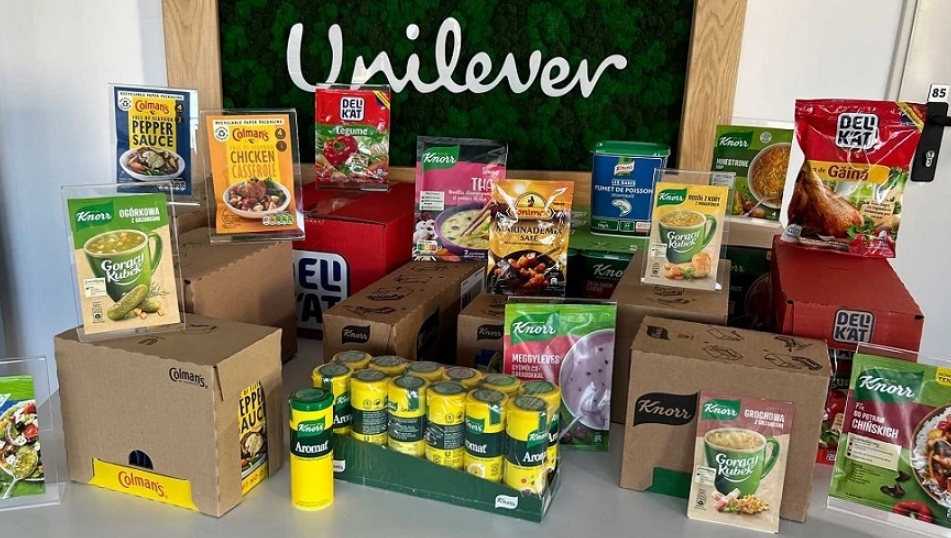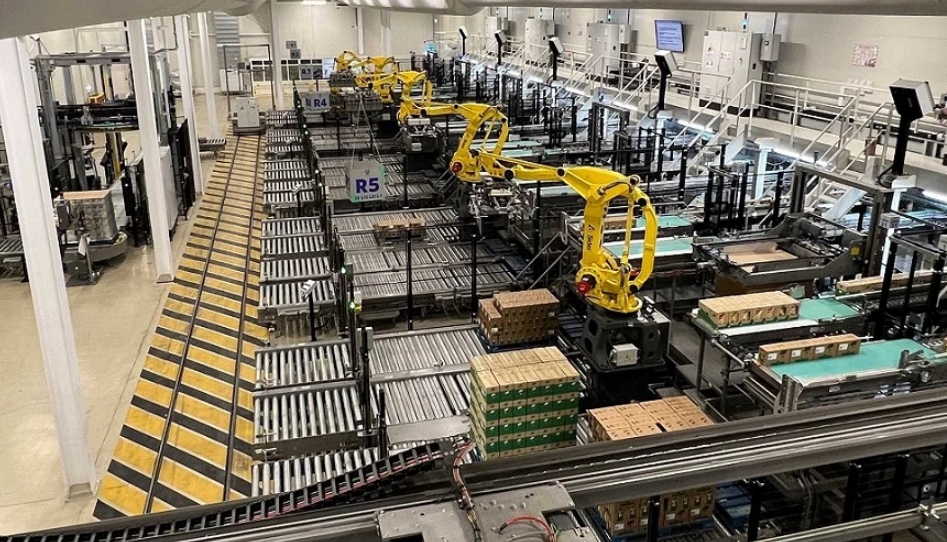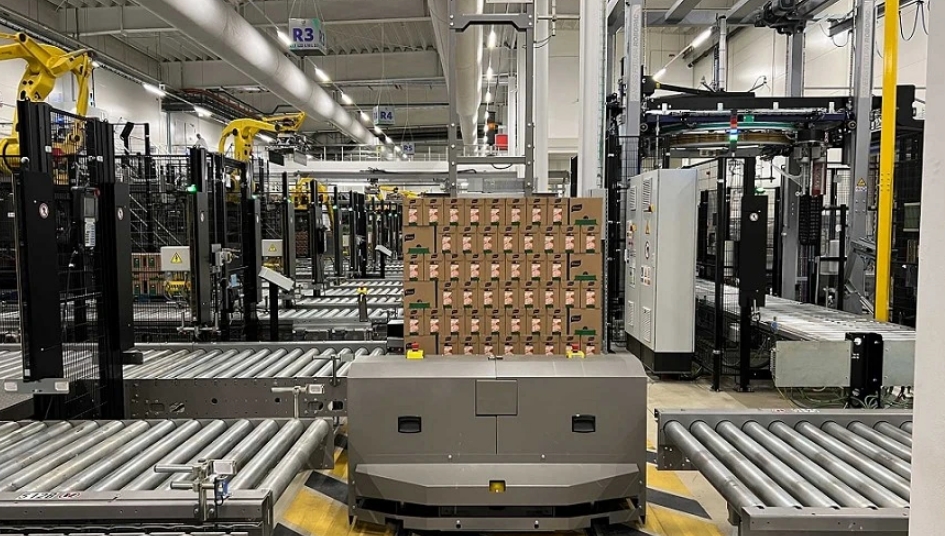Sidel’s central robotic palletizing system supports Unilever Ploiesti expansion
2024-06-06
Sidel supplied a central palletizing system composed of eight robotic cells connected to 28 packaging lines at Unilever’s food factory located in Ploiesti, Romania, for flavoring brands, including the iconic Knorr.
Unilever is one of the world’s leading FMCG companies, with sales in 190 countries and 3.4 billion daily users. Its food factory in Ploiesti, Romania, makes products for one of the company’s most recognized brands, Knorr.

The complete dry foods portfolio includes meal preparation mixes, dish bases and sauces and dressings, among other products, in various packaging formats: sachets, pouches, boxes and multi-item packs. These different product lines also include a wide variety of secondary packaging options: American boxes, lidded trays, shrink film trays and shelf-ready packaging.
Unilever Ploiesti’s production capacity evolved gradually. Volumes tripled from 12,000 to 35,000 tons per year, stock reference units (SKUs) increased from 200 to 1,000, packaging lines went from 14 to 28 and staff jumped from 200 to 700 people.
It was no longer feasible to use the factory’s existing end-of-line system to handle the range of brands being packaged on site. Unilever Ploiesti invested in a new central palletizing solution, designed primarily for continuous production site transformations.
Future-proof robotic palletizing
Sidel installed a centralized palletizing system comprising eight robotic cells, several hundred meters of box and pallet conveyors, four pallet handling shuttles and two stretch wrappers, enabling a production rate of up to 98 pallets per hour. This consolidated system connects to 28 packaging lines.

The robotic cells are divided into two separate groups: one with five robots and the other with three. Each group has a central warehouse for all types and sizes of pallets, an induction shuttle for complete pallet unloading and a compact shuttle for the supply of empty pallets integrated under the robotic islands.
Depending on the capacity of each packaging line and palletizing pattern desired, the cells have three or four product feeds, which guarantees a robot utilization rate of 92%.
A modular structure in a compact space
Unilever’s master plan for the Ploiesti plant was to keep palletizing space in a separate area from the packaging room to easily accommodate repeated modifications to the lines. To connect both areas, Sidel proposed a high-level transportation solution with spiral elevators to save space, facilitate circulation and increase overall flexibility linked to plant transformations.

Iuliana Popescu Colt, operations manager at Unilever, comments: “We have been impressed by Sidel’s design ability to fit the detailed palletizing specifications we required into a compact area and at the same time control the complexity and high throughput coming from the packaging lines”.
Laurentiu Badulescu, technical manager at Unilever, said: “This was a complex project; however, the solution developed by Sidel is based on proven standard modules that have been developed and implemented in other projects. Sidel intelligently combined them to “provide a customized solution and avoid any complex start-up issues due to a one-time, made-to-order solution.”
Comprehensive project management
Sidel was able to demonstrate its proposed layout using virtual reality glasses, allowing Unilever to visualize the entire facility, verify space limitations, and resolve potential issues related to platforms, operator access, and raw material flows. . The speed simulations also confirmed the speed levels and utilization rate of the robots.
Following the design phase, Sidel’s project management spanned from factory acceptance testing to on-site installation. The eight robotic cells were completed in less than eight months. The modular concept accelerated installation, as each cell was commissioned individually and immediately integrated into the plant’s direct packaging operations.

Laurentiu adds: “During the installation phase, it helped to have spent a little more time in the design and simulation stages. The virtual model fit exactly into the physical space, therefore, we achieved the desired performance in a very short period.” .
Energy savings and an integrated digital process
The central palletizing system is integrated into Unilever’s digital process. As soon as the operator selects the production order from the packaging line, all information linked to palletizing, including pallet size, pattern type, number of rows or layers and the label applied is automatically set. and is transmitted to the corresponding palletizing cell and to the entire end-of-line configuration.
Lucian Tarida, Process Engineer at Unilever, adds “At Unilever, in every project, we prioritize energy reduction as we aim to achieve a zero carbon footprint by 2030. By using an energy-saving module for each robotic cell in this Sidel palletizing, we can generate energy from the deceleration of the robotic arm and feed it back into the network for use by other robots or equipment on the line. In the same way, when a packaging line is stopped for cleaning or processing. a format change, the conveyors go into standby mode as the photocells detect that no products are being transported.




